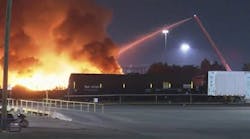The phrase, "This isn't your father's fire service", quickly reminds us of our multiple duties and disciplines. Today's firefighters are expected to maintain proficiency in firefighter skills, use of the incident command system and accountability, RIT efficiency, basic and advanced EMS skills, and awareness and response to HAZMAT, WMD and terrorism related events. Along with these programs, many organizations require their members to remain up-to-date on blood borne pathogens/communicable diseases (actually an OSHA requirement), CPR, advanced cardiac and pediatric life support, and other advanced courses. Our firefighters are now, or should be, actively involved with public education and fire prevention, pre-planning and inspections, smoke detector installations and community-based safety programs. Let's not forget the tremendous amount of technology being deployed and implemented to make our jobs easier. These new "toys and tools" require training time to master their proficiency. After we consider all that is asked of us, we need to remember that our number one mission - responding to and providing emergency service to the citizens - cannot be put on stand-by while we attempt to conquer all of the training topics!
So, how do we squeeze out the time for training in this multifaceted fire service? The traditional methods are all effective. These include: formal in-service training; drill nights; regional, state, and national schools and conferences; and the formal channels at our local colleges and universities. While these are effective training avenues, they all require both personal time and time away from our primary duty of emergency response. Career members may have these sessions scheduled as part of the workday. However, volunteer providers are asked to give more and more of their personal "off duty" time. Even for the most dedicated, these additional hours can be staggering.
By now you are probably wondering how the company officer can overcome these hurdles and provide effective training, using minimal time, and assuring that the topics are relevant? The ideas to follow are suggestions to assist the company officer in getting the best out of the ever-elusive "training moments".
In order to get the most benefit out of our training time, the first consideration is, "What topics are the most important for the company?" If you have limited time, spend it on the areas that will give the greatest reward. In a broader sense, you can't go wrong by training for "high risk - low frequency" events. Look to these five areas for guidance when choosing a topic.
1. Needs of the Fire Company: As the company officer, you have the unique ability to not only work with the crew, but to serve as the supervisor. As part of your daily review and post-incident evaluation, pick a topic or task that you believe the team could benefit from with training time.2. Requests of the Company Members: If you ask for their input, you might be surprised with topics that are brought forward. Their needs are not always evident, so ask!
3. Needs of Your Community or Response District: Take a look at your response area. Do you have any special hazards/target hazards? Do you have buildings, occupancies, or construction types that can contribute to potentially complex or dangerous operations? Has your community experienced any recent events/emergencies that require more diligence on the part of the responders, i.e., serial arsons, discovery of drug labs, etc?
4. Requests from Your Training Division: Ask the Training Officer for topic ideas based on upcoming or planned training. Can you prepare the troops or enhance what they will formally receive at an upcoming training sessions? Ask what types of props and training packages are available for "field delivery" back at your station. Training Officers love to see company level members being proactive in the pursuit of training.
5. Needs and Missions of the Fire Department: What is your fire department's mission? What are the goals? Can you deliver in-house training that will move the organization towards those goals? Ask your chief what he/she expects from you. Topics may include; organizational safety (reducing injuries and accidents), response safety, target hazard identification and pre-planning, improvement of and delivery of new services, etc. You will be surprised at the training opportunities hidden in the mission and goals statement.
These five areas can get you started with "places" to look for training ideas. You may have other sources. The topics selected, based on these points or others, can be and should be easily to prepare (remember, we don't have much discretionary prep time), require minimal props, books, or hand-outs, and can be delivered by any method (videos, classroom, field exercise, site visits). Part II of this series will give some specific examples of time sensitive, effective, and easy to complete training ideas. Until then, keep looking for those training moments.
Related:





